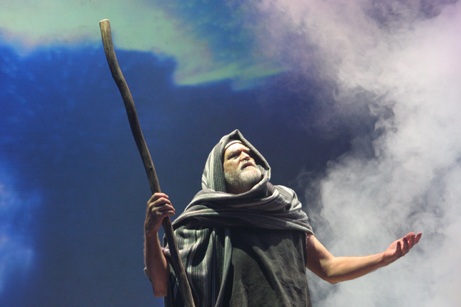Post Author: Bill Pratt
 Here is a typical conversation I’ve had on the blog with skeptics many times:
Here is a typical conversation I’ve had on the blog with skeptics many times:
Skeptic: “What if a person today, claiming to be a prophet of God, comes along and tells you to do something? Wouldn’t you have to do it?”
Me: “Only if they could prove they were a true prophet of God.”
Skeptic: “How would you know that? After all, there are lots of people claiming to speak for God, and they tell their followers to do lots of crazy things.”
So what is the answer? Do we Christians blindly follow any person who comes along and says they have a new word from God?
One of the primary ways the great prophets of God were confirmed in the Bible was through miracles. Not all prophets were confirmed by miracles, but many were, and certainly the major ones were. Jesus, and all of his apostles were confirmed by miracles, and so were many Old Testament prophets.
In fact, there is an important passage in the Book of Exodus where this exact scenario plays out. God has asked Moses to go back to Egypt and free the Israelites from bondage, but Moses protests in Exodus 4.
“What if they [the Israelites] do not believe me or listen to me and say, ‘The LORD did not appear to you’?” (Ex 4:1 NIV)
God responds by showing Moses three miraculous signs that will prove to the Israelites that Moses is a true messenger of God.
Then the LORD said to him, “What is that in your hand?” “A staff,” he replied. The LORD said, “Throw it on the ground.” Moses threw it on the ground and it became a snake, and he ran from it. Then the LORD said to him, “Reach out your hand and take it by the tail.” So Moses reached out and took hold of the snake and it turned back into a staff in his hand. “This,” said the LORD, “is so that they may believe that the LORD, the God of their fathers—the God of Abraham, the God of Isaac and the God of Jacob—has appeared to you.” (Ex 4:2-5 NIV)
Since the Pharaoh’s power was symbolized by a serpent, the purpose of this miracle was to show that God (through Moses) had power over Pharaoh. Alfred Edersheim, in Bible History: Old Testament, expands on this thought:
Hitherto Moses had wielded the shepherd’s crook. At God’s command he was to cast it away; his calling was to be changed, and he would have to meet “the serpent”—not only the old enemy, but the might of Pharaoh, of which the serpent was the public and well-known Egyptian emblem. “The serpent was the symbol of royal and divine power on the diadem of every Pharaoh”—the emblem of the land, of its religion, and government.
In part 2, we’ll look at two more signs that God will provide in order to authenticate Moses’s message to the enslaved Israelites.